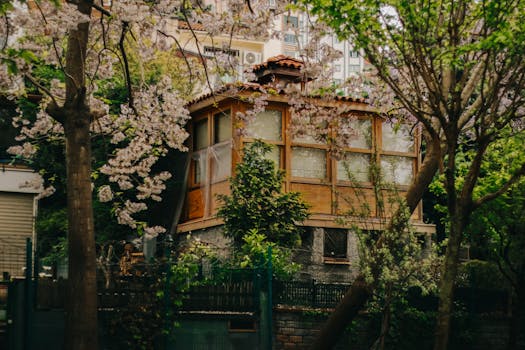
Urban Green Spaces: The Future of Outdoor Living in European Cities by 2025
Urban Green Spaces are becoming increasingly important in European cities, and it’s easy to see why. As the world becomes more urbanized, the need for green spaces has never been more pressing. Not only do they provide a peaceful escape from the hustle and bustle of city life, but they also play a crucial role in promoting sustainability and mitigating the effects of climate change.
What are Urban Green Spaces?
Urban Green Spaces refer to any area of greenery within a city or town, including parks, gardens, green roofs, and even urban forests. These spaces are designed to provide a range of benefits, from improving air quality and reducing noise pollution, to promoting biodiversity and supporting mental health.
The Benefits of Urban Green Spaces
The benefits of urban green spaces are numerous and well-documented. Some of the most significant advantages include:
- Improved air quality: Urban green spaces help to absorb pollutants and particulate matter, improving the air quality and making it healthier to breathe.
- Reduced noise pollution: Green spaces can act as a buffer against noise pollution, creating a more peaceful environment for residents and wildlife.
- Promoting biodiversity: Urban green spaces provide a habitat for a wide range of plants and animals, helping to support local ecosystems and promote biodiversity.
- Supporting mental health: Spending time in nature has been shown to have a positive impact on mental health, reducing stress and anxiety and improving overall wellbeing.
European Cities Leading the Way
Many European cities are leading the way when it comes to incorporating urban green spaces into their design. Cities such as Copenhagen, Stockholm, and Amsterdam have made significant investments in green infrastructure, with a focus on creating sustainable and livable spaces for residents.
For example, Copenhagen’s Copenhagenize project aims to create a network of green bike lanes and parks throughout the city, promoting sustainable transportation and reducing carbon emissions.
The Future of Outdoor Living in European Cities
As we look to the future, it’s clear that urban green spaces will play a vital role in shaping the way we live and interact with our cities. By 2025, we can expect to see even more innovative and sustainable green spaces popping up in cities across Europe.
Some of the trends we can expect to see include:
- Increased use of green roofs and walls: Green roofs and walls are becoming increasingly popular, providing insulation, reducing energy consumption, and creating habitats for wildlife.
- More emphasis on community engagement: Urban green spaces will be designed with community engagement in mind, providing opportunities for residents to get involved in the design and maintenance of these spaces.
- Integration with technology: Urban green spaces will be designed with technology in mind, incorporating smart sensors, renewable energy systems, and other innovative features to promote sustainability and efficiency.
Conclusion
Urban Green Spaces are the future of outdoor living in European cities, and it’s easy to see why. With their numerous benefits, from improving air quality to promoting mental health, these spaces are essential for creating sustainable and livable cities.
As we look to the future, it’s clear that urban green spaces will play a vital role in shaping the way we live and interact with our cities. By incorporating innovative and sustainable design, community engagement, and technology, we can create green spaces that not only promote sustainability but also support the health and wellbeing of residents.






